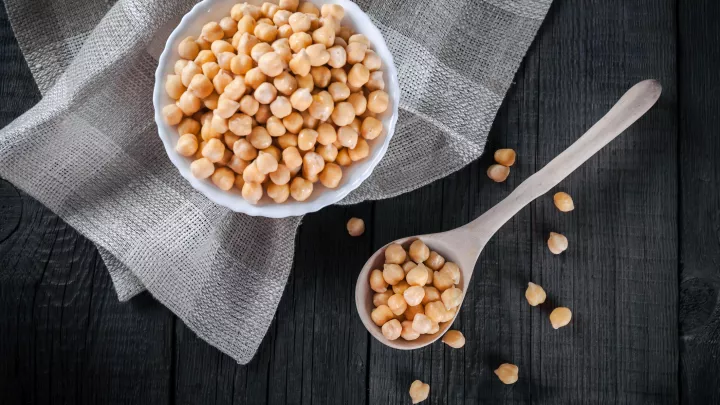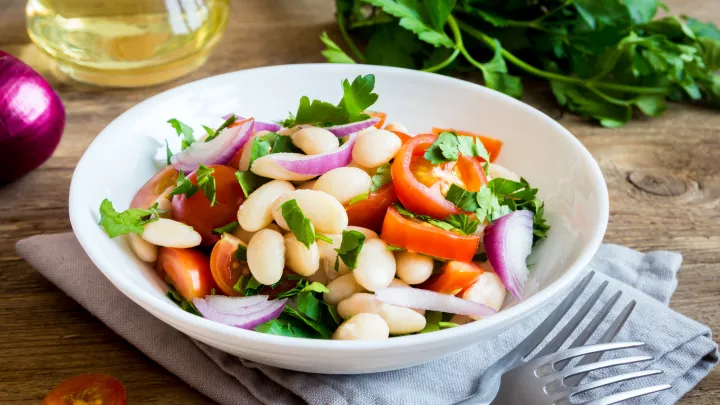What does a heart-healthy diet look like?

Heart disease continues to be a leading cause of death worldwide. Healthy eating plays a significant role in controlling heart disease and reducing the risk factors associated with heart attacks and strokes.
“By prioritizing healthy eating, individuals can reduce their risk of heart disease,” says Kaveh Bookani, MD. “This includes choosing nutritious foods and avoiding unhealthy fats and excessive sodium.”
A heart-healthy diet incorporates the following foods:
- Vegetables
- Fruits
- Legumes
- Nuts
- Whole grains
- Fish
Dr. Bookani shares the following tips for supporting heart health through nutrition.
Choose a heart-healthy diet
Several diets have been proven effective in supporting heart health. These include:
- DASH diet: This diet focuses on consuming fruits, vegetables, whole grains, lean proteins and low-fat dairy products. It is particularly effective in lowering blood pressure.
- Mediterranean diet: This diet emphasizes consuming fruits, vegetables, whole grains, legumes, nuts and healthy fats like olive oil. It also includes moderate amounts of fish, poultry and red wine.
- Ornish diet: This is a low-fat and plant-based diet. It advocates making small lifestyle changes to improve heart health and overall well-being.
- Healthy Eating Index: This diet is based on the recommendations of the United States Department of Agriculture. It emphasizes a balanced intake of all food groups.
Watch your sodium intake
High sodium intake is linked to an increased risk of heart disease and high blood pressure. To maintain heart health, stick to 1,500 mg or less of sodium each day.
“To stay within the recommendations, you really have to be mindful of the sodium content of foods, especially in processed, prepackaged and restaurant foods,” Dr. Bookani says.
Choose good dietary fats
Not all fats are created equal, and it is essential to make wise choices when it comes to dietary fats. Avoid or limit the following fats:
- Saturated fats are found in animal-based products, such as meat, cheese, ice cream, butter and lard. These can increase LDL or "bad" cholesterol levels.
- Trans fats are often found in fried foods and baked goods. They raise "bad" cholesterol and increase the risk of diabetes.
Monounsaturated fats, or MUFAs, and polyunsaturated fats, or PUFAs, can lower LDL cholesterol levels and reduce the risk of heart disease. Good sources of MUFAs and PUFAs include:
- Avocado, olive, sesame, safflower and peanut oils
- Avocados
- Peanut butter
- Nuts and seeds
- Fatty fish
Incorporate fish
The American Heart Association recommends eating fish at least twice a week. Regularly consuming fatty fish has been shown to reduce your risk of heart attack and stroke.
“Fish is an excellent source of omega-3 fatty acids, which provide numerous cardiovascular benefits,” Dr. Bookani says.
Fish that contain the highest amounts of omega-3 fatty acids include:
- Salmon
- Mackerel
- Sardines
- Trout
- Anchovies
Limit alcohol and caffeine
Moderation is key when it comes to alcohol and caffeine consumption. Women should limit alcohol intake to no more than one drink per day, while men should limit it to one to two drinks per day.
As for caffeine, coffee and tea can be enjoyed in moderation, while energy drinks should be avoided due to their high caffeine content.
Keep it simple
Ultimately, common-sense eating habits can go a long way in helping our hearts remain healthy.
“Moderation continues to be the best approach to maintaining a heart-healthy diet,” Dr. Bookani says. “Making simple changes to your diet and sustaining them over time can help keep you and your family healthy.”







